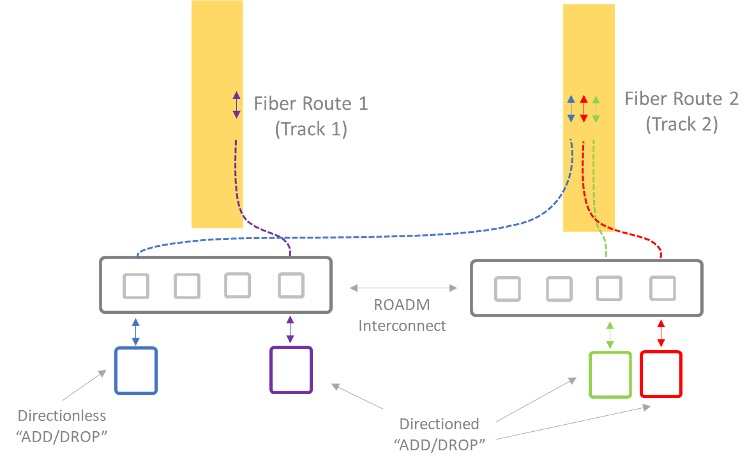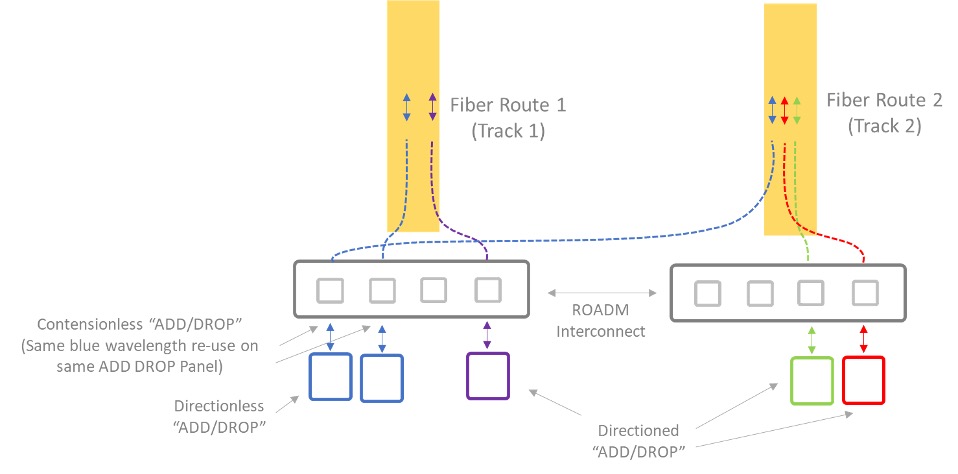Flexible, Intelligent CDCF Networking
With the significant increase in router density and packet transport over DWDM (dense wave division multiplexing), a more flexible “any to any” topology was required to match more modern traffic flows. Unlike the “one to many” approach of broadcast and select, directionless ADD/DROP enabled by a “route and select” architecture implemented with cutting-edge ROADM wavelength selector switch technology solves the limitations.

Figure 2: Directionless ADD/DROP
(click to enlarge)
Going back to the train analogy, a two-direction or two-degree system meant trains coming from the east had only one choice going west to leave the station. Multi-degree technology increased the switching capability (typically up to eight routes) to enable meshed networks. Thus, trains could now be routed to additional tracks going in different directions to different train stations. However, these systems still had limits to their flexibility. Trains passing through the stations without stopping benefitted from this multi-degree switching, but trains that stopped (for example in add/drop) still required manual intervention.
Directionless ADD/DROP allows for any train (traffic) to access any of the tracks (fiber routes) at the station (node). This traffic flow is irrespective of which ADD/DROP patch panel location it is connected to. Directionless ROADMs enable automatic reconfiguration of the direction for an added or dropped wavelength. This solution provides a further increase in the flexibility of route design and implementation.

Figure 3: Contentionless ADD/DROP
(click to enlarge)
Contentionless ADD/DROP
Contentionless ADD/DROP (see image, above) refers to the ability to manage two trains of the same color arriving at the same station at the same time. The ROADM can transmit and receive two signals with the same wavelength on the same ADD/DROP panel. Thus, contentionless ADD/DROP keeps the two “blue” trains separated and then routes them in two different directions without interference or blocking.
As illustrated, the add/drop tuning and route steering and switching can be done remotely via software, which provides the ultimate in dynamic design and planning flexibility.



















